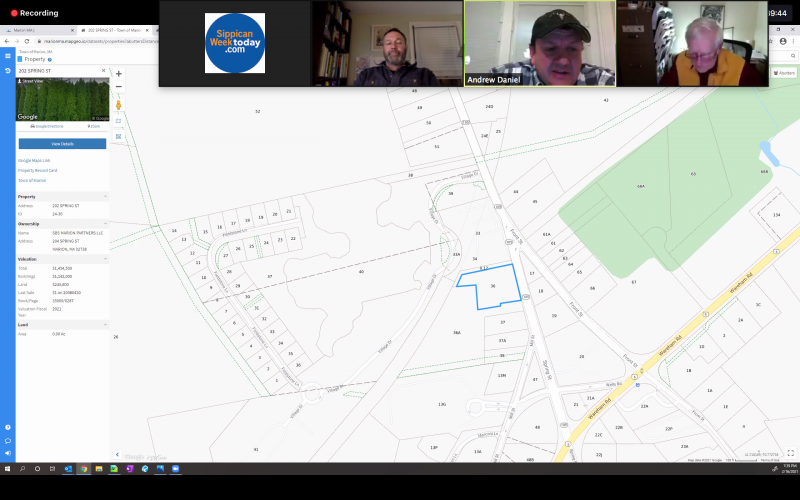Marion bylaw may reduce housing density
MARION — In an effort to curb potential for dense housing that Board Chair William Saltonstall said could "scar the Marion landscape," the Planning Board has moved forward a bylaw change which would restrict high-density housing developments.
The change would reduce the allowable density in Marion from 12 units per acre to six, which is similar to the current density of housing in town.
For instance, the single family houses at Marion Village Estates were developed around six units per acre, and many of the houses on Main Street are also on lots which measure out to about six houses per acre.
Board Chair William Saltonstall said that the change was drafted with “a feeling that 12 units per acre is very very dense.”
He added “there is definitely a need for some higher density housing to be developed,” and that six units per acre will still be able to provide a “very high density.”
“I think six an acre looks a lot like south Main Street, walking down with three on either side,” Board Member Christopher Collings said.
In addition, plans for the 17 acre, 128-unit Heron Cove housing development measure out to around seven units per acre.
“Try to imagine that same development with twelve units per acre,” Selectman John Waterman said. “It would be hard to see that.”
According to Marion Open Space Acquisition Commission Chair John Rockwell, the bylaw allowing for 12 units per acre was written specifically for the decades-old Marconi Village development.
Since Marion has no undeveloped multi-family lots, the zoning of a property would have to be changed in order for the bylaw to apply.
40B projects, which allow developers to build affordable housing in towns which have not met the 10% threshold imposed by the state, would not be affected by the bylaw change.
Saltonstall said that the Planning Board is also looking into other bylaws, some of which may encourage “creative” development of higher-density housing, while still preserving the character of Marion.
“It’s a balancing act, we don’t want to make it too restrictive,” Saltonstall said, while adding that 12 units per acre could “really really scar the Marion landscape.”














